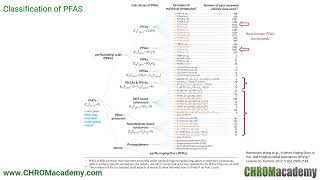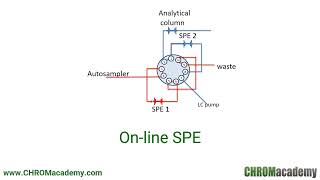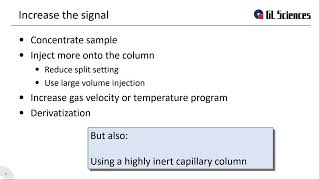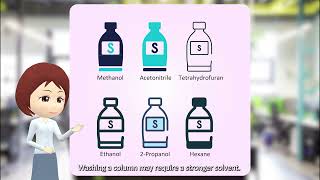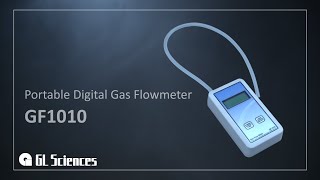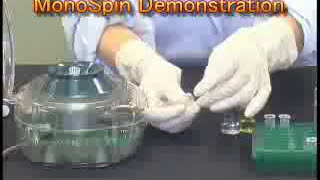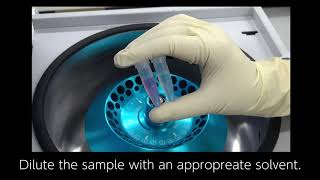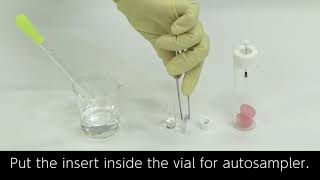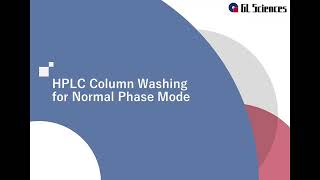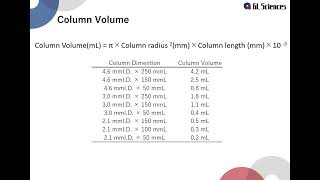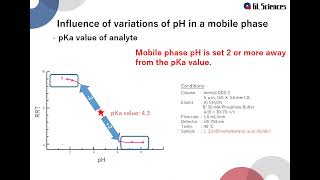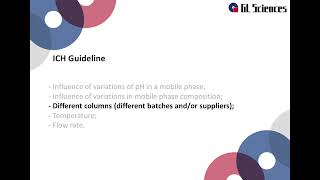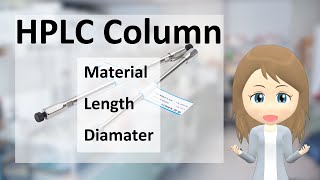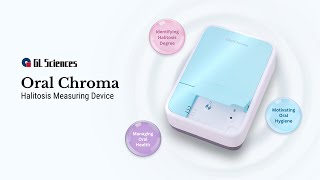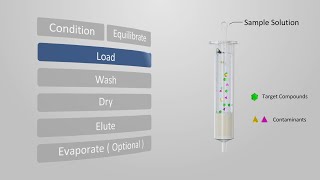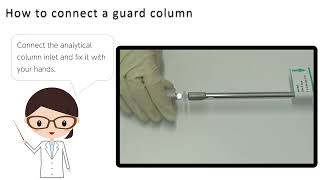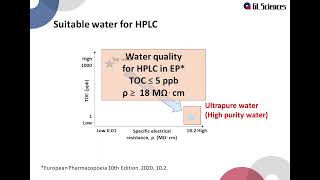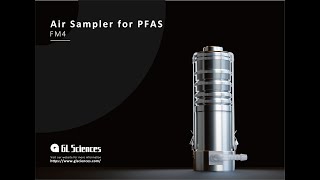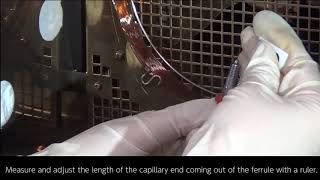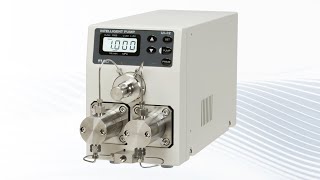- HPLC Columns
- Close Menu ×
- C18 Columns
- Core-shell Columns
- C8 & C4 HPLC Columns
- HILIC HPLC Columns
- PFP & Phenyl HPLC Columns
- Bioseparation LC columns
- SEC HPLC Columns
- All HPLC Columns
- InertSustain C18 First choice for ultra-high inertness and high durability, delivering superior peak shapes with low back pressure.
- Inertsil ODS-3 Most popular C18, trusted for long-established methods, offering strong retentivity and high loading capacity.
- InertSustain AQ-C18 First choice for high-polarity compounds, delivering strong retention even under 100% aqueous mobile phases.
- Inertsil ODS-3V Validated version of ODS-3, designed for GLP/GMP compliance, ensuring batch-to-batch consistency.
- InertSustainSwift C18 Ultra-inert, fast-separation C18 for high-throughput LC-MS and LC-MS/MS with superior peak symmetry.
- InertSustain AX-C18 Mixed-mode C18 with anion exchange for strong retention of highly polar acidic compounds without ion-pairing.
- All C18 Columns visible-xs
- InertCore Biphenyl Core-shell biphenyl for UHPLC/HPLC with superior π-π selectivity and strong retention of aromatic compounds.
- InertCore C8 Core-shell C8 for UHPLC/HPLC with moderate hydrophobicity, enabling fast, efficient, reproducible separations.
- InertCore Plus C18 Core-shell C18 for UHPLC/HPLC with superior reproducibility, durability, and sharp peaks.
- InertSustain C8 Ultra-inert C8 column for rapid analysis of hydrophobic compounds with symmetric peaks across a wide pH range.
- Inertsil C8 Ultra-pure silica C8 column for rapid analysis of hydrophobic compounds, ideal for legacy methods.
- InertSustainSwift C8 Ultra-inert C8 column for low-polarity analytes, peptides, and oligonucleotides with optimized 200Å pore size.
- Inertsil C8-3 Strong retentivity, very inert, and low back pressure, based on the same silica and bonding as Inertsil ODS-3.
- Inertsil WP 300 Wide-pore C8 column for rapid, high-resolution separation of proteins and peptides with sharper peaks.
- Inertsil C4 Low-retentivity C4 column for rapid analysis of highly hydrophobic compounds like fat-soluble vitamins.
- All C8 & C4 Columns visible-xs
- InertSustain Amide First choice for HILIC mode, offering the strongest retention of polar compounds with superior stability in water-rich conditions.
- Inertsil HILIC Diol-bonded HILIC column for excellent peak shape and strong retention of highly polar basic compounds.
- InertSustain NH2 First choice for sugar analysis, offering superior stability, reproducibility, and compatibility with weakly acidic eluents.
- Inertsil NH2 Aminopropyl column for sugar analysis, highly retentive in normal phase with superior stability and reproducibility.
- ProteoSil HILIC Bioseparation-focused HILIC column, excelling in hydrophilic compound, peptide, glycan, and oligonucleotide analysis.
- All HILIC Columns visible-xs
- InertSustain PFP A pentafluorophenyl-modified column designed for enhanced separation of structurally similar compounds through multiple retention mechanisms, including π-π, dipole, and hydrogen bonding interactions.
- InertSustain Phenyl A directly bonded phenyl group gives the InertSustain Phenyl column unique reversed-phase selectivity, ideal for separating polar compounds and structural isomers via π-π and hydrogen bonding interactions.
- InertSustain Phenylhexyl A phenylhexyl-bonded column that offers complementary selectivity to traditional alkyl-chain columns, providing high inertness, reproducibility, and low back pressure.
Get the Right Column for Your Compound — InstantlyWhat compound are you analyzing? - Sample Preparation
- Close Menu ×
- SPE Cartridges & Columns
- Spin Columns
- Proteomics Products
- InertSep QuEChERS kit
- Cleanup/Separating Bulks
- SPE Manifolds
- ALL Sample Preparation
- InertSep C18 Silica sorbent with high end-capping, ideal for lipid removal & pesticide residue analysis.
- InertSep C18-ENV C18 sorbent with low end-capping, optimized for water analysis & anionic surfactant removal.
- InertSep HLB Versatile SPE column for extracting non-polar to highly polar compounds, with a wide pH range (1-14).
- InertSep C8 Silica sorbent with octyl groups, offering weaker retention than C18 for highly retained compounds.
- InertSep SCX Silica-based SPE column with strong cation exchange and non-polar interactions for enhanced retention.
- InertSep SAX Monofunctional C18 sorbent with medium end-capping, allowing secondary interactions for versatile use.
- All SPE Cartridges & Columns visible-xs
- MonoSpin C18 High-permeability spin column for peptide desalting, drug extraction, and fast biological sample preparation.
- MonoSpin ProA Fast Protein A spin column for high-purity IgG antibody purification with >90% recovery.
- MonoSpin C18-CX Mixed-mode spin column with C18 and cation exchange for enhanced basic drug recovery.
- MonoSpin Phospholipid TiO₂/ZrO₂-coated spin column for efficient phospholipid removal and matrix effect reduction.
- MonoSpin SAX Strong anion exchange spin column for fast extraction of acidic drugs with high recovery.
- MonoSpin TiO TiO₂ spin column for phospholipid removal and organophosphorus pesticide purification.
- All Spin Columns visible-xs
- Exosome Purification
- Desalting
- Digestion
- Fractionation
- Phosphopeptide Enrichment
- Centrifuge Accessories
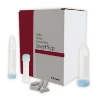 InertSep QuEChERS Kit High-purity extraction and cleanup kit for pesticide residue analysis in food and environmental samples.
InertSep QuEChERS Kit High-purity extraction and cleanup kit for pesticide residue analysis in food and environmental samples.
Get the Right Column for Your Compound — InstantlyWhat compound are you analyzing? - GC Columns
- InertCap 1MS General purpose, Hydrocarbons, PCBs, High Volatile solvents, Phenols
- InertCap 1 General purpose, Hydrocarbons, PCBs, High Volatile solvents, Phenols
- InertCap 5MS/Sil General purpose, Halogenated compounds, Phenols, Pesticides, FAME
- InertCap 5MS/NP General purpose, Halogenated compounds, Phenols, Pesticides, FAME
- InertCap 5 General purpose, Halogenated compounds, Phenols, Pesticides, FAME
- InertCap 624MS Residual solvents of Pharmaceuticals, VOCs, Alcohols
- All GC Columns visible-xs
Get the Right Column for Your Compound — InstantlyWhat compound are you analyzing? - Instruments
 LD249 Gas Leak Detector Compact, easy-to-use leak detector with thermal conductivity sensor for fast, accurate gas detection. Replaces the LD239.
LD249 Gas Leak Detector Compact, easy-to-use leak detector with thermal conductivity sensor for fast, accurate gas detection. Replaces the LD239.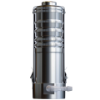 FM4: Air Sampler for PFAS Low-volume air sampler for PFAS enabling comprehensive analysis of both gas and particle phases in a single sampling using stage-optimized materials.
FM4: Air Sampler for PFAS Low-volume air sampler for PFAS enabling comprehensive analysis of both gas and particle phases in a single sampling using stage-optimized materials.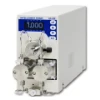 Intelligent Pump UI-32 Series Next-generation dual-plunger HPLC pump with ultra-low pulsation and automated pressure control for flow chemistry.
Intelligent Pump UI-32 Series Next-generation dual-plunger HPLC pump with ultra-low pulsation and automated pressure control for flow chemistry. OralChroma Halitosis Measuring Device High-precision breath analyzer using gas chromatography to quantify VSCs in 4 minutes — fast, reliable, and maintenance-free.
OralChroma Halitosis Measuring Device High-precision breath analyzer using gas chromatography to quantify VSCs in 4 minutes — fast, reliable, and maintenance-free.
 LD249 Gas Leak Detector Latest model replacing LD239, with thermal conductivity detection for helium, hydrogen, and other gases.
LD249 Gas Leak Detector Latest model replacing LD239, with thermal conductivity detection for helium, hydrogen, and other gases.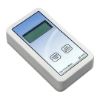 GF1010 Digital Gas Flowmeter Portable, volumetric meter for accurate GC gas flow measurement without gas selection.
GF1010 Digital Gas Flowmeter Portable, volumetric meter for accurate GC gas flow measurement without gas selection.
 Intelligent Pump UI-32 Series Next-generation dual-plunger HPLC pump with ultra-low pulsation and automated pressure control for flow chemistry.
Intelligent Pump UI-32 Series Next-generation dual-plunger HPLC pump with ultra-low pulsation and automated pressure control for flow chemistry.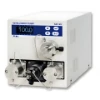 Intelligent Micro Pump MP-32 Series Compact micro pump with ultra-low pulsation and high-pressure stability, ideal for flow chemistry and precision dosing.
Intelligent Micro Pump MP-32 Series Compact micro pump with ultra-low pulsation and high-pressure stability, ideal for flow chemistry and precision dosing.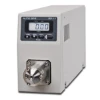 Auto BPR BP-11 Auto Back Pressure Regulator for the UI-22 Series, maintaining stable pressure for consistent flow.
Auto BPR BP-11 Auto Back Pressure Regulator for the UI-22 Series, maintaining stable pressure for consistent flow.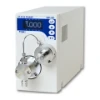 PCS Pump SP-32 Series Single plunger pump with real-time pressure control and low-pulsation flow—ideal for precise fluid delivery.
PCS Pump SP-32 Series Single plunger pump with real-time pressure control and low-pulsation flow—ideal for precise fluid delivery.- All HPLC Pumps visible-xs
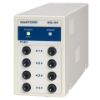 Gastorr AG Series Reliable, CPU-controlled degassing system for low-flow applications with independent chamber design.
Gastorr AG Series Reliable, CPU-controlled degassing system for low-flow applications with independent chamber design.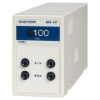 Gastorr BG Series High-performance degassing system with real-time vacuum display and independent chamber design.
Gastorr BG Series High-performance degassing system with real-time vacuum display and independent chamber design.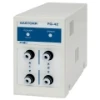 Gastorr FG-42 Solvent degassing system optimized for fluorinated solvents with real-time vacuum display.
Gastorr FG-42 Solvent degassing system optimized for fluorinated solvents with real-time vacuum display.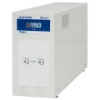 Gastorr PG Series High-flow degassing system for fractionating applications with real-time vacuum display.
Gastorr PG Series High-flow degassing system for fractionating applications with real-time vacuum display.- All Degassing Units visible-xs
- Accessories
- Close Menu ×
- HPLC Accesories
- SPE Accessories
- GC Accessories
- HPLC Tubing
- Filters
- HPLC Fittings
- Solvent Bottle Caps and Other Accessories
- Gradient Mixer
- Regulator
- IDEX Accessories
- HPLC Column Hardware and Other Accessories
- Vials
- SPE Vacuum Manifolds
- SPE Gravity Manifolds
- Cleanup/Separating Bulks
- Glass Chromatography Columns
- General SPE Accessories
- Applications & Industries
- Close Menu ×
- Featured
- PFAS Solutions Products and workflows for EPA and ISO-compliant PFAS testing in water, air, and soil.
- Flow Chemistry Solutions Integrated pumps and pressure regulators for continuous, high-temperature flow chemistry reactions.
- Life Science/Bio Products Spin columns and purification tools for antibody capture, protein cleanup, and bioseparation workflows.
- Gas/Air Sampling Equipment Sampling tools for capturing VOCs, aldehydes, and trace gases in environmental and industrial settings.
- Resources
- About
- Contact Us
Search
You have no items in your shopping cart.
Videos
23 records
Video
Chromatographic Analysis of PFAS : Method Development and Optimization (Webinar) Chromatographic Analysis of PFAS : Method Development and Optimization (Webinar) Other Products
Perfluoroalkyl and polyfluoroalkyl substances (PFAS) are a large group of nearly 15,000 synthetic compounds characterized by a fluorinated alkyl chain. The US Environmental Protection Agency (EPA) has been pursuing the reduction of PFAS emissions since 2004. As legacy PFAS were phased out, a new generation of compounds known as “emerging PFAS” were introduced as a replacement. Engineered to have shorter half-lives and faster bioelimination, emerging PFAS have nonetheless raised concerns about toxicity and environmental impact. Several methods exist for monitoring PFAS in water and soil, generally variations on official methods developed by EPA and ASTM International. No official methods exist for air monitoring yet, but adaptations of EPA air collection methods and European method CEN/TS ...
Video
Categories: Other Products
Video
PFAS is a hot topic in the field of water analysis, with many of the testing labs gearing up to regulated 47+ compounds.
This analysis can be tricky as there are many potential sources of contamination and losses.
This presentation will include:
1. Direct LC-MS/MS water analysis
2. Approaches for water sample pre-treatment
3. Identifying sources of contamination
4. Method for the analysis of volatile PFAS in air
Video
Categories: Other Products
Video
Why is an Inert GC Column Important? (Webinar) Why is an Inert GC Column Important? (Webinar) Gas Chromatography
Event Overview
This presentation includes an introduction to column selection and analysis examples, which are basic information necessary for gas chromatography. This webinar is suitable for chemical analysts in all fields using GC, such as chemical industry, environment, food, universities, and research laboratories.
Key Learning Objectives
・ Expand your basis knowledge about gas chromatography
・ How to choose GC Column and get the best results
・ Learn about the applications
Video
Categories: Gas Chromatography
Video
HPLC Column Washing for Reversed-Phase Mode HPLC Column Washing for Reversed-Phase Mode Liquid Chromatography
We provide a step-by-step guide on cleaning and maintaining HPLC columns for reliable results.
Video
Categories: Liquid Chromatography
Video
The GF1010 Digital Gas Flow meter is a portable handheld flow meter for gas chromatography systems.
Video
Categories: Gas Chromatography
Video
MonoSpin Series for Solid Phase Extraction Spin Column MonoSpin Series for Solid Phase Extraction Spin Column Sample Preparation
Video
Categories: Sample Preparation
Video
How to use MonoSpin: a spin column for concentration and purification of trace level samples How to use MonoSpin: a spin column for concentration and purification of trace ... Sample Preparation
MonoSpin is a GL Science`s original product for sample pre-treatment with centrifuge. MonoSpin enables concentration and purification of trace level samples like biological samples without any need for dehydration.
Video
Categories: Sample Preparation
Video
MonoTrap (Monolithic Metarial Sorptive Extraction) for aroma compounds and VOCs MonoTrap (Monolithic Metarial Sorptive Extraction) for aroma compounds and VOCs Gas/Air Sampling Equipment
This video goes over sampling and solvent extraction using our MonoTrap gas sampler.
Video
Categories: Gas/Air Sampling Equipment
Video
HPLC column Washing for Normal Phase Mode HPLC column Washing for Normal Phase Mode Liquid Chromatography
In this video we will introduce our recommended HPLC column washing method on normal phase mode.
Video
Categories: Liquid Chromatography
Video
In this video, we will introduce our recommended HPLC column washing method.
Video
Categories: Liquid Chromatography
Video
HPLC Column Troubleshooting -- Low robustness conditions: pH in a mobile phase. HPLC Column Troubleshooting -- Low robustness conditions: pH in a mobile phase. Liquid Chromatography
This video is part of a series that discusses HPLC reproducibility issues between columns. In this video, we will focus on the effects of the pH in a mobile phase.
Video
Categories: Liquid Chromatography
Video
HPLC Column Troubleshooting -- Columns robustness (2) HPLC Column Troubleshooting -- Columns robustness (2) Liquid Chromatography
This video is part of a series that discusses HPLC reproducibility issues between columns. In this video, we will focus on low robustness conditions when developing an application.
Video
Categories: Liquid Chromatography
Video
HPLC is a crucial technique for separating and analyzing complex mixtures into individual components. At its core is the column hardware and, in this video, we'll be breaking down its fundamental role and structure.
Video
Categories: Liquid Chromatography
Video
LD239 provides the most sensitive Helium leak detection available in an
inexpensive, compact, easily charged (via USB), and easy-to-use configuration.
Video
Categories: Gas Chromatography
Video
Quickly detect volatile sulfur compounds – the primary components of halitosis: hydrogen sulfide, methyl mercaptan, and dimethyl sulfide – using OralChroma's highly sensitive semiconductor detector and integrated column for efficient sample gas separation.
Video
Categories: Other Products
Video
Video
Categories: Sample Preparation
Video
This video will help you understand what an HPLC guard column is, how to choose and install it.
Video
Categories: Liquid Chromatography
Video
HPLC Column Troubleshooting -- Quality of Mobile Phase HPLC Column Troubleshooting -- Quality of Mobile Phase Liquid Chromatography
This video discusses HPLC column problems caused by the quality of the mobile phase, focusing on organic solvents and water for HPLC.
Video
Categories: Liquid Chromatography
Video
Air Sampler for PFAS(FM4) is a new Low Volume Air Sampler which you can analyze PFAS in the particle and gas in one sampling. You can achieve comprehensive analysis in one sampling because each stage of it has optimized material and configuration for each target substance.
Video
Categories: Gas/Air Sampling Equipment
Video
Proper installation of a capillary column is a fundamental yet critical step in constructing a gas chromatography (GC) setup for effective analysis. Discover how to accomplish this in our step-by-step instructional video!
Video
Categories: Gas Chromatography
Video
HPLC Column Troubleshooting: Effect of Column Equilibration. HPLC Column Troubleshooting: Effect of Column Equilibration. Liquid Chromatography
This video introduces HPLC column troubleshooting related to column equilibration
Video
Categories: Liquid Chromatography
Video
Combine high precision flow and ease of use. The UI-22 HPLC pump uses a linear driver mechanism in which the plunger moves in line with the motor’s axis. Because aspirated air can be easily discharged, and with the seal suffering almost no wear, tiny leaks from the seal are eliminated, which means that even highly volatile solvents can be efficiently pumped.
Video
Categories: Liquid Chromatography,HPLC Instruments
Video
Introducing our new HPLC Column factory in Japan where we produce our InertSustain and Inertsil HPLC Columns.
Video
Refine

